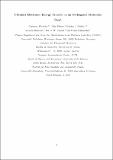Files in this item
Ultrafast Electronic Energy Transfer in an orthogonal molecular dyad
Item metadata
| dc.contributor.author | Wiebeler, Christian | |
| dc.contributor.author | Plasser, Felix | |
| dc.contributor.author | Hedley, Gordon J. | |
| dc.contributor.author | Ruseckas, Arvydas | |
| dc.contributor.author | Samuel, Ifor D. W. | |
| dc.contributor.author | Schumacher, Stefan | |
| dc.date.accessioned | 2018-02-17T00:33:05Z | |
| dc.date.available | 2018-02-17T00:33:05Z | |
| dc.date.issued | 2017-03-02 | |
| dc.identifier | 249183852 | |
| dc.identifier | 579d98f9-ecb4-4189-9173-6baf87a6973a | |
| dc.identifier | 85014419259 | |
| dc.identifier | 000395619100031 | |
| dc.identifier.citation | Wiebeler , C , Plasser , F , Hedley , G J , Ruseckas , A , Samuel , I D W & Schumacher , S 2017 , ' Ultrafast Electronic Energy Transfer in an orthogonal molecular dyad ' , Journal of Physical Chemistry Letters , vol. 8 , no. 5 , pp. 1086-1092 . https://doi.org/10.1021/acs.jpclett.7b00089 | en |
| dc.identifier.issn | 1948-7185 | |
| dc.identifier.other | ORCID: /0000-0001-9114-3522/work/32543054 | |
| dc.identifier.uri | https://hdl.handle.net/10023/12741 | |
| dc.description | The St Andrews group acknowledges support from the European Research Council (grant number 321305) and the Engineering and Physical Sciences Research Council (grant EP/L017008/1). I.D.W.S. also acknowledges support from a Royal Society Wolfson Research Merit Award. | en |
| dc.description.abstract | Understanding electronic energy transfer (EET) is an important ingredient in the development of artificial photosynthetic systems and photovoltaic technologies. Although EET is at the heart of these applications and crucially influences their light-harvesting efficiency, the nature of EET over short distances for covalently bound donor and acceptor units is often not well understood. Here we investigate EET in an orthogonal molecular dyad (BODT4) in which simple models fail to explain the very origin of EET. Based on nonadiabatic ab initio molecular dynamics calculations and fluorescence depolarization experiments we gain detailed microscopic insights into the ultrafast electro-vibrational dynamics following photoexcitation. Our analysis offers molecular-level insights into these processes and reveals that it takes place on timescales ≲ 100 fs and occurs through an intermediate charge-transfer state. | |
| dc.format.extent | 7 | |
| dc.format.extent | 1991256 | |
| dc.language.iso | eng | |
| dc.relation.ispartof | Journal of Physical Chemistry Letters | en |
| dc.subject | Photophysics | en |
| dc.subject | Spectrum stimulation | en |
| dc.subject | Ultrafast dynamics | en |
| dc.subject | Time-dependent DFT | en |
| dc.subject | Trajectory surface hopping | en |
| dc.subject | QC Physics | en |
| dc.subject | T Technology | en |
| dc.subject | DAS | en |
| dc.subject | SDG 7 - Affordable and Clean Energy | en |
| dc.subject.lcc | QC | en |
| dc.subject.lcc | T | en |
| dc.title | Ultrafast Electronic Energy Transfer in an orthogonal molecular dyad | en |
| dc.type | Journal article | en |
| dc.contributor.sponsor | EPSRC | en |
| dc.contributor.sponsor | European Research Council | en |
| dc.contributor.institution | University of St Andrews. School of Physics and Astronomy | en |
| dc.contributor.institution | University of St Andrews. Condensed Matter Physics | en |
| dc.identifier.doi | https://doi.org/10.1021/acs.jpclett.7b00089 | |
| dc.description.status | Peer reviewed | en |
| dc.date.embargoedUntil | 2018-02-16 | |
| dc.identifier.grantnumber | ep/l017008/1 | en |
| dc.identifier.grantnumber | en |
This item appears in the following Collection(s)
Items in the St Andrews Research Repository are protected by copyright, with all rights reserved, unless otherwise indicated.

